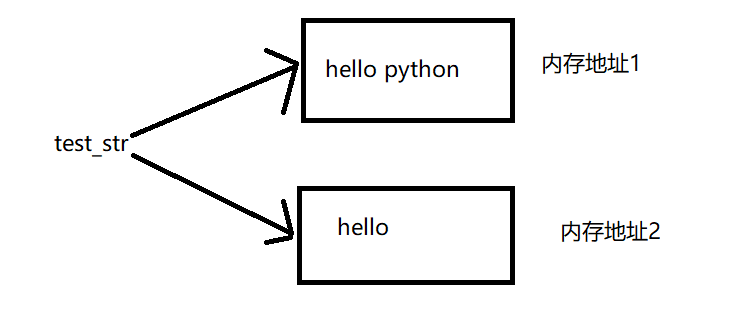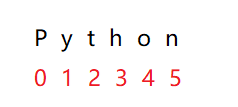一、特性
1、字符串不可修改
test_str = "hello python"
print(id(test_str))
test_str = "hello java"
print(id(test_str))
两次打印的id结果:
2885581349680
2885581092464
可以看到结果不一致,说明重新赋值后,虽然名字一样,但是两次指向的内存地址不一样

2、字符串是有序的
3、可迭代的
test_str = "hello"
for i in test_str:
print(i)
结果为:
h
e
l
l
o
二、字符串的创建
1、单引号括起来
str_test = 'python'
2、双引号括起来
str_test1 = "java"
3、三引号括起来
str_test2 = """哈哈哈"""
str_test3 = '''hahh'''
三、字符串操作
1、字符串的访问
(1)通过索引访问:变量名[index]
正序索引从0开始,倒序索引从-1开始
test_str = "python"

print(test_str[0])
结果为:p
(2)字符串切片:字符串[起始索引:结束索引:步长]
test_str = "python"
print(test_str[0:3])
结果为:
pyt
(3)字符串切片注意点
- 取头不取尾(左闭右开)
- 步长不写默认为1
- 右边超出边界,取所有值
- 起始索引不写默认为0
- 结束索引不写默认到最后
- 字符串中的空格也是字符串的一部分
(4)倒序切片:步长前写负号(-)为倒序切片
正序索引和倒序索引最好不要混着用
test_str = "hello"
print(test_str[-1:-3:-1])
结果为:
llo
(5)字符串反转:字符串[::-1]
test_str = "hello"
print(test_str[::-1])
结果为:
olleh
四、字符串拼接
test_str1 = "hello"
test_str2 = "python"
test_str3 = test_str1 + test_str2
print(test_str3)
五、字符串重复输出
print("--" * 2)
--会重复输出2次
六、字符串转义
1、换行符\n
2、转义符\
print("hello \\n python")
结果为:
hello \n python
3、原串输出r
print(r"hello \n python")
结果为:
hello \n python
七、字符串常用方法
1、将所有字母大写.upper()
2、将所有字母小写.lower()
3、将字符串首字母大写.capitalize()
4、大小写互换.swapcase()
5、所有单词首字母大写.title()
6、计算某个字符在字符串中出现的次数count(统计对象,开始索引,结束索引),开始索引和结束索引可以省略,表示全部字符串(规则同切片)
7、统计字符串长度len(字符串)
8、返回查找对象的第一个索引值.find("查找对象")
9、返回查找对象的最后一个索引值.rfind("查找对象")
10、判断字符串是否都是大写.isupper()
11、判断是否都是小写.islower()
12、判断字符串是否有字母或者数字.isalnum()
13、判断字符串是否是空格.isspace()
14、判断字符串是否都是数字.isdigit()
15、判断是否以指定的字符开头.startswith("指定字符")
16、判断是否以指定的字符结尾.endswith("指定字符")
欢迎来到testingpai.com!
注册 关于